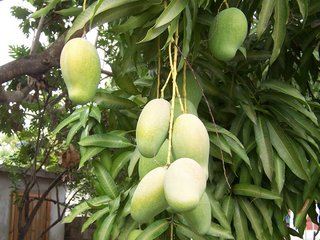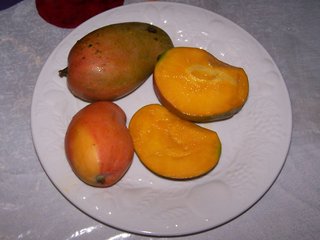
Mango Blossom
Mango, a tropical fruit delight, originates from evergreen trees native to Asia and has become a beloved Caribbean staple. Its luscious, sweet flavor and vibrant color make it a versatile ingredient used in everything from refreshing juices and cocktails to savory appetizers and decadent desserts.
Belonging to the genus Mangifera, mangoes comprise around 30 species of tropical fruiting trees in the Anacardiaceae family. While their origins lie in Southern and Southeast Asia, mangoes now flourish across Central and South America, Africa, Arabia, and India. They hold significant cultural importance in South Asia, where they are celebrated as the national fruit in countries like India, Pakistan, Bangladesh, and the Philippines.

Mango Blossom

Green Mango and the Tree
Mango trees (Mangifera indica) can reach impressive heights of 35–40 meters, with expansive crowns that provide generous shade. Their leaves transition in color—from an initial orange-pink to dark glossy red, and finally to a mature dark green. The small white flowers, fragrant like lily of the valley, give way to fruit that takes three to six months to ripen. When fully ripe, the flesh is exceptionally sweet, juicy, and varies in texture depending on the cultivar.

Mature Mango

Ripe Mango
Beyond eating mangoes fresh, they are celebrated for their versatility. Mangoes are blended into juices, mashed into ice creams and milkshakes, and even used in baked goods such as pies. In Southeast Asia, sliced ripe mango is famously paired with sweet glutinous rice flavored with coconut milk, creating a dessert that is both indulgent and refreshing.